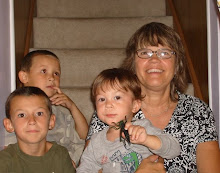BK students:
- find it difficult to sit for long periods of time
- like working with their hands
- formulate ideas when they are out walking or engaged in a physical activity (Recess anyone?)
- talk with their hands
- learn about things by touching them- "hands-on"
- need to practice a new skill rather than just read about it.
Thomas Armstrong talks about the BK learner in "The Multiple Intelligences of Reading and Writing". He cites Montessori's strategy of 'words have the power of action'. Students draw a slip of paper with a sentence written on it. After reading the sentence, they perform the task that is written: "Water the plants." This helps them connect with the idea that words have power and can lead to action. I think that is an interesting way to connect our BK learners with the written word. What do you think?


6 Comments:
We played "fly-swatter" ISTEP practice games in STAR reading. Students can swat the correct answer in a M-C question. Then the group must find proof that their answers are correct.
I find "action" in reading text a hard thing to do. I can use BK when teaching skills but in connected text it is difficult at the upper grades. Would love to hear some ideas.
Would just allowing standing, laying on the floor, movement during independent reading be a plus for BK folks?
My STAR Math group is practicing rounding numbers by "punching" up a number that rounds up...if the number is less than 4, you don't have enough fingers to make a full fist, so you don't have the power to PUNCH that number up to the next digit! If the number is 5 or greater, you do have the power to PUNCH it up to the next digit.
In my STAR math group, we used our hands to move balloons across a time line. The students had fun trying to determine the right spot to move their balloon. The interaction was much better than paper pencil.
Becky, I'm not sure this really qualifies as B-K, but this is something I tried with my 5th grade STAR group last year...
We were working on cause and effect and taking turns reading the text aloud. When the reader read a cause, I snapped my fingers. I asked the kids who were following the text silently to participate by listening for my snap, and then snapping when they heard the effect. (It took LOTS of practice to be able to do this!!!)
Don't know how B-K this is, but maybe someone will be able to piggy-back from this and give us better ideas! :)
Wow Nadine, this sounds like it would be hard to master but very good and engaging. Thanks for the idea.
Post a Comment
Subscribe to Post Comments [Atom]
<< Home